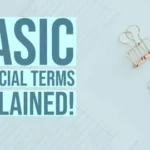Coffee break loans, also known as payday loans or short-term loans, are small, unsecured loans designed to provide borrowers with quick access to cash until their next payday. These loans are typically for small amounts, ranging from $50 to $1,000, and are meant to be repaid in full, along with interest and fees, within a short period, usually two to four weeks.
The term “coffee break loan” refers to the idea that these loans are intended to cover unexpected expenses or bridge the gap until the borrower’s next paycheck, much like taking a coffee break during the workday. However, the high interest rates and fees associated with these loans can make them an expensive and potentially risky form of borrowing.
Coffee break loans are characterized by their short repayment periods, small loan amounts, and high annual percentage rates (APRs). APRs for these loans can range from 200% to over 1,000%, making them one of the most expensive forms of credit available. The combination of high interest rates and short repayment periods can make it challenging for borrowers to repay the loan on time, potentially leading to a cycle of debt and additional fees.
Contents
How Coffee Break Loans Work
Application Process:
Additionally, lenders may require access to the borrower’s bank account to facilitate the loan disbursement and repayment process.
Eligibility Criteria:
The eligibility criteria for coffee break loans vary from lender to lender, but generally, borrowers must meet the following requirements:
- Age: Borrowers must be at least 18 years old.
- Employment: Lenders typically require borrowers to have a steady source of income, such as employment or government benefits.
- Bank Account: Borrowers must have an active checking account to receive the loan funds and facilitate repayment.
- Credit Check: While coffee break lenders may not perform a hard credit check, they may still review the borrower’s credit history to assess their creditworthiness.
Repayment Terms:
Coffee break loans are designed to be repaid quickly, usually within a few weeks or on the borrower’s next payday. Repayment terms vary among lenders, but a typical coffee break loan requires the borrower to repay the principal amount, plus interest and fees, in a single lump sum payment on the due date.
Typical Loan Duration:
Coffee break loans are short-term loans, with typical loan durations ranging from one week to one month. The exact loan term depends on the lender’s policies and the borrower’s pay cycle. Longer loan terms may be available, but they often come with higher interest rates and fees.
Advantages of Coffee Break Loans
Coffee break loans offer several advantages that make them appealing for those in need of quick cash. One of the primary benefits is the rapid access to funds. Unlike traditional loan applications that often involve extensive paperwork and lengthy approval processes, coffee break loans can provide money within a matter of hours or even minutes. This swift availability can be invaluable in emergency situations when funds are needed urgently.
Another advantage is the minimal requirements for obtaining a coffee break loan. Lenders typically do not conduct stringent credit checks or demand extensive documentation, making the process more accessible for individuals with less-than-perfect credit histories or those who may not meet the strict criteria of traditional lenders.
Furthermore, coffee break loans are particularly convenient for addressing unexpected expenses or emergencies. Whether it’s a car repair, medical bill, or any other unanticipated financial obligation, these loans can provide a temporary solution until a more permanent financial arrangement can be made. Their short-term nature and easy accessibility make them a viable option for bridging financial gaps during times of urgent need.
Disadvantages of Coffee Break Loans
One of the primary drawbacks of coffee break loans is their exorbitantly high interest rates. These short-term loans often carry annual percentage rates (APRs) ranging from 300% to 500%, making them an extremely expensive form of borrowing. The high interest rates can quickly snowball, making it challenging for borrowers to repay the loan and potentially leading to a cycle of debt.
Another significant disadvantage of coffee break loans is the risk of falling into a debt trap. Many borrowers find themselves unable to repay the loan in full by the due date, typically within two to four weeks. As a result, they are forced to roll over the loan or take out a new one to cover the previous debt, incurring additional fees and interest charges. This cycle can perpetuate, trapping borrowers in a never-ending spiral of debt.
Furthermore, coffee break loans can have a detrimental impact on an individual’s credit score. Late or missed payments, as well as defaulting on these loans, can severely damage credit scores, making it more difficult and expensive to secure future credit or loans. This can have long-lasting consequences, affecting the borrower’s ability to rent an apartment, obtain a mortgage, or even secure employment in some cases.
Alternatives to Coffee Break Loans
When facing a financial crunch, coffee break loans may seem like a tempting option due to their convenience and fast approval process. However, it’s essential to explore alternative solutions that could potentially offer better terms and lower interest rates. Here are some alternatives to consider:
Personal Loans
Personal loans from banks, credit unions, or online lenders can provide a more affordable way to borrow money. These loans typically have lower interest rates than break loans and offer fixed repayment schedules over a longer period, making them more manageable. However, the application process may be more rigorous, and approval may take longer.
Credit Cards
If you have a credit card with available credit, using it for short-term borrowing could be a better option than coffee break loans. While credit card interest rates can be high, they are often lower than those of coffee break loans. Additionally, credit cards offer a grace period before interest accrues, allowing you to pay off the balance without incurring any interest charges.
Borrowing from Friends or Family
Asking friends or family members for a loan can be an alternative to break loans, especially if they are willing to offer favorable terms or even an interest-free loan.
Payday Alternative Loans (PALs)
Some federal credit unions offer Payday Alternative Loans (PALs), which are designed as a more affordable alternative to payday loans and coffee break loans. PALs typically have lower interest rates and longer repayment terms, making them a more manageable option for borrowers.
When considering alternatives to break loans, it’s crucial to evaluate your financial situation, credit score, and repayment capabilities. While coffee break loans may provide quick relief, exploring alternative options can help you avoid the potential pitfalls of high interest rates and short repayment periods.
Responsible Use of Coffee Break Loans
Given the high costs associated with these short-term loans, borrowers must understand the full financial implications before taking one out.
The fees and interest rates on break loans can quickly spiral out of control if not repaid promptly. Borrowers should carefully review all the terms, calculate the total payback amount including fees, and ensure they have the means to repay the loan by the due date. Even a brief extension can substantially increase the overall cost.
It’s critical to have a solid repayment plan in place before taking out a coffee break loan. Setting calendar reminders and automating payments can help avoid missed due dates and additional fees.
Ultimately, coffee break loans should only be considered as an absolute last resort for short-term cash needs. Responsible use requires full understanding of the costs, risks and a realistic, actionable repayment strategy from the outset.
Regulatory Landscape of Coffee Break Loans
Coffee break loans, also known as payday loans or short-term loans, are subject to various state and federal regulations aimed at protecting consumers and promoting responsible lending practices. While the specific laws and regulations vary across different jurisdictions, there are several key areas that typically govern the coffee break loan industry.
State Laws
Many states have implemented laws and regulations specifically targeting payday loans and short-term lending. These laws often include provisions such as:
- Capping the maximum loan amount and fees that lenders can charge
- Limiting the number of rollovers or renewals allowed
- Requiring lenders to disclose all terms and conditions clearly
- Mandating cooling-off periods between consecutive loans
- Prohibiting certain lending practices deemed predatory or abusive
It’s important to note that some states have outright banned payday lending or imposed strict restrictions that effectively make it impossible for lenders to operate profitably.
Consumer Protections
In addition to state-specific laws, there are federal consumer protection laws that apply to coffee break loans. The Truth in Lending Act (TILA) and the Electronic Fund Transfer Act (EFTA) are two key regulations that require lenders to provide clear disclosures about loan terms, fees, and repayment schedules. These laws aim to ensure that borrowers have the necessary information to make informed decisions.
Industry Regulations
While not legally binding, industry organizations like the Community Financial Services Association of America (CFSA) have established best practices and self-regulatory guidelines for payday lenders. These guidelines often address issues such as responsible lending practices, consumer education, and complaint resolution processes.
It’s important for borrowers to understand the regulatory landscape surrounding coffee break loans and to be aware of their rights and protections under applicable laws and regulations. Responsible lenders should comply with all relevant laws and regulations and prioritize transparent and ethical lending practices.











